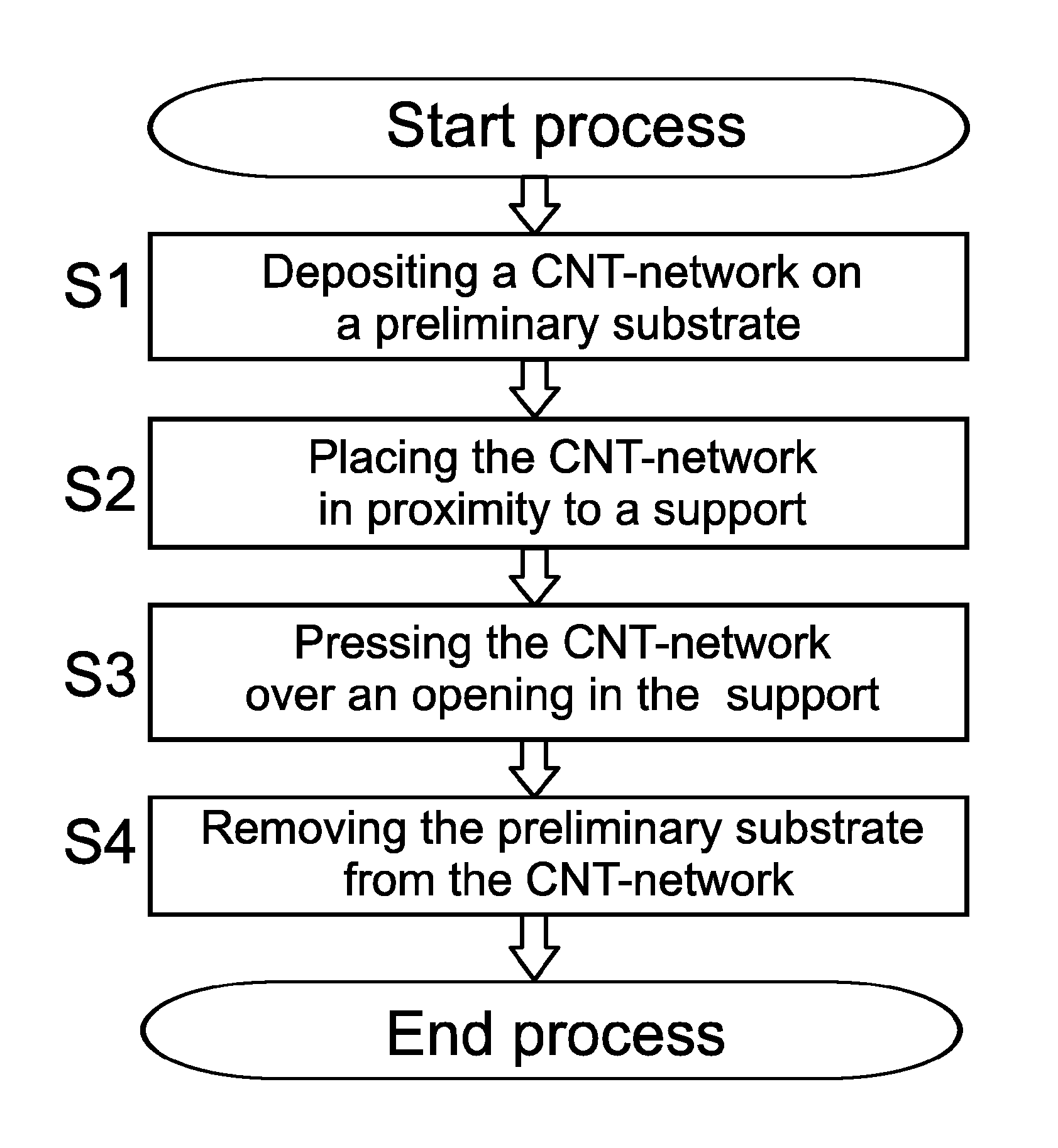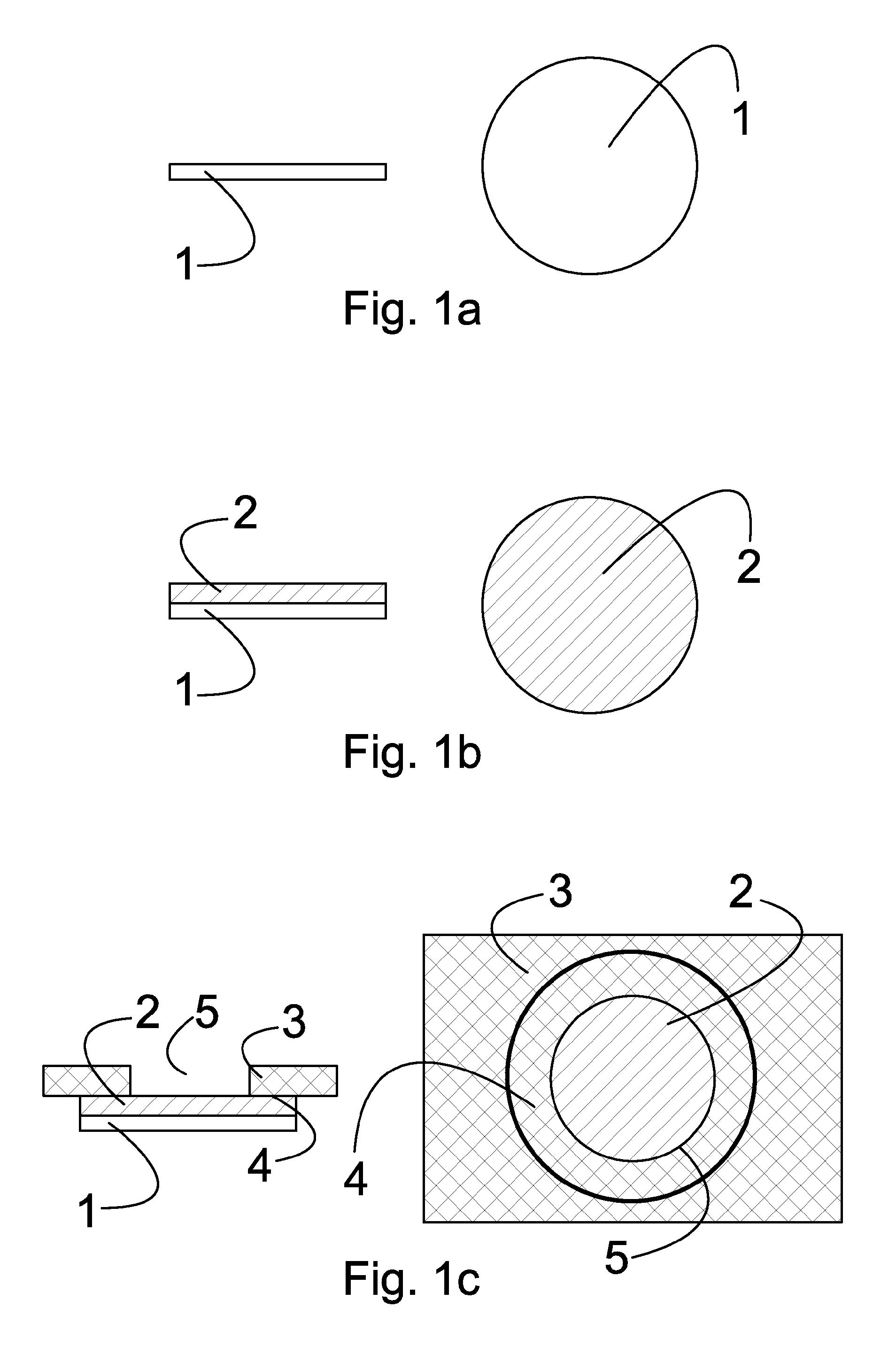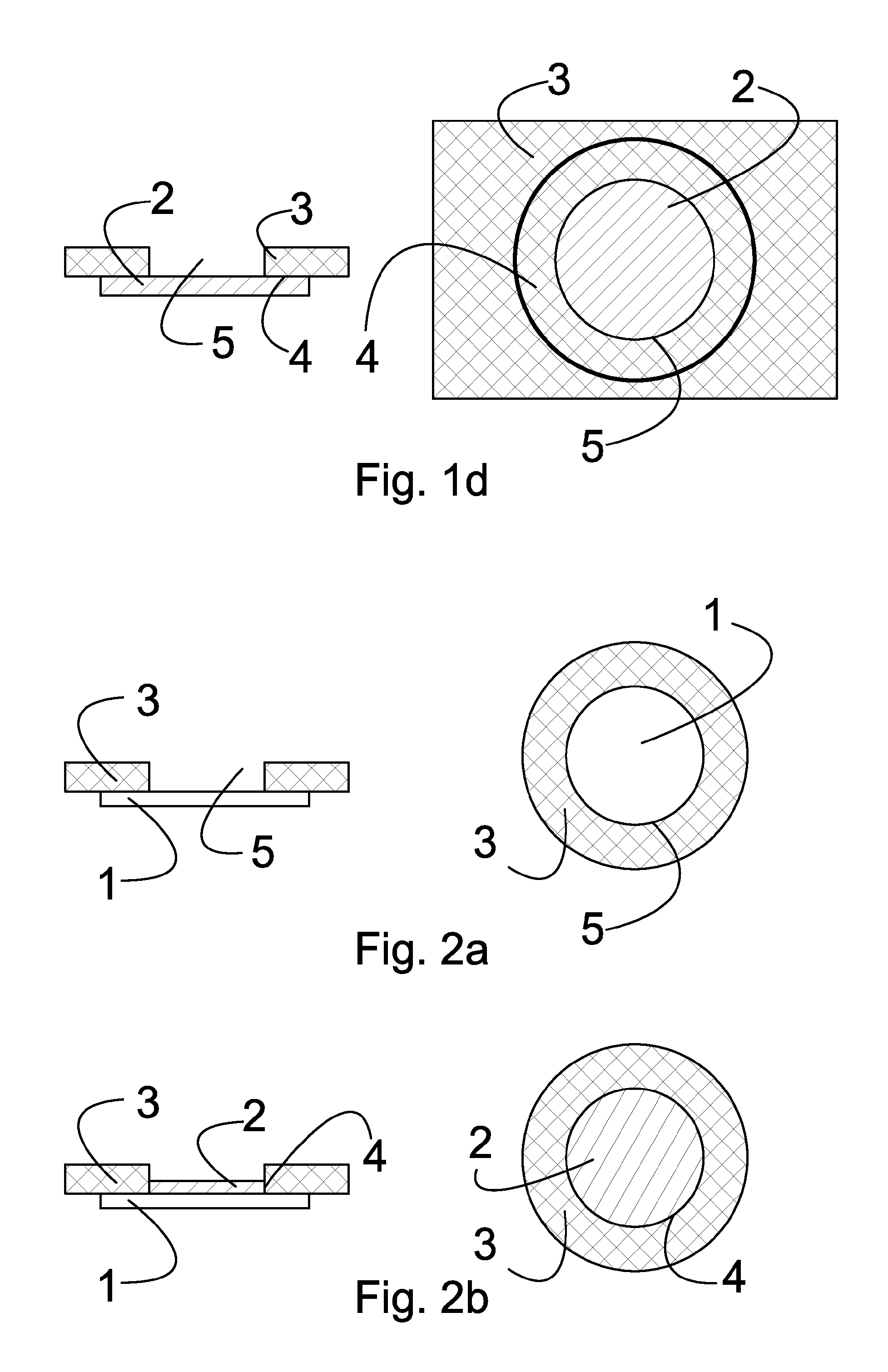Structures comprising high aspect ratio molecular structures and methods of fabrication
a molecular structure and high aspect ratio technology, applied in the field of film deposition technology, can solve the problems of limiting the possibility of applying buckypaper to different electrical devices or other applications, challenging the methods of the prior art, and limiting the application of buckypaper to different electrical devices, etc., to achieve high mechanical strength, small diameter, and high aspect ratio
- Summary
- Abstract
- Description
- Claims
- Application Information
AI Technical Summary
Benefits of technology
Problems solved by technology
Method used
Image
Examples
example 1
[0060]SWCNTs (single walled carbon nanotubes) were synthesized in an aerosol laminar flow (floating catalyst) reactor using carbon monoxide and ferrocene as a carbon source and a catalyst precursor, respectively. SWCNT mats were then collected directly from the gas phase downstream of the reactor by filtering through 2.45 cm diameter nitrocellulose (or silver) disk filters (Millipore Corp, USA). In the following examples the filter takes the role of the preliminary substrate 1 though other means of obtaining the network 2 of fibrous material on the preliminary substrate 1 are possible according to the invention. Details of the synthesis process of the SWCNTs can be found e.g. in patent application publication WO 2005 / 085130, which is included as a reference herein.
[0061]The deposition temperature on the filter surface (preliminary substrate 1) was measured to be 45° C. The layer thickness of networks 2 of SWCNTs was controlled by the deposition time, which could be altered from a fe...
example 2
[0068]Loud Speaker
[0069]A film of randomly oriented freestanding CNTs was transferred over a hole (FIG. 5) on a PET substrate. A power source 7 (a microphone jack on a computer) was attached to drive a varying current through the CNTs via electric wires 8.
[0070]Aerosol Filter
[0071]Due to high porosity and strength, randomly oriented freestanding CNT films were utilized as aerosol filters. For that purpose, CNT film was attached to a substrate to cover the hole completely. In this case aerosol particles were captured by passing the flow through the film. Depending on the particle diameter and flow rate the efficiency and quality factor of the filter were in the ranges 99.5-99.9998% and 20-120. The efficiency was estimated as
[0072]E=Cin-CoutCin100%,
[0073]where Cin and Cout are the aerosol concentration entering and leaving the filter. The quality of filters can be estimated on the basis of its efficiency and for a given particle size and the pressure drop, Δp:
[0074]qF=-ln(1-E)Δ...
PUM
| Property | Measurement | Unit |
|---|---|---|
| diameter | aaaaa | aaaaa |
| temperature | aaaaa | aaaaa |
| wavelengths | aaaaa | aaaaa |
Abstract
Description
Claims
Application Information
 Login to View More
Login to View More - R&D
- Intellectual Property
- Life Sciences
- Materials
- Tech Scout
- Unparalleled Data Quality
- Higher Quality Content
- 60% Fewer Hallucinations
Browse by: Latest US Patents, China's latest patents, Technical Efficacy Thesaurus, Application Domain, Technology Topic, Popular Technical Reports.
© 2025 PatSnap. All rights reserved.Legal|Privacy policy|Modern Slavery Act Transparency Statement|Sitemap|About US| Contact US: help@patsnap.com



